Sergio Staino Un viaggio a Berlino, 1981

Sergio Staino Un viaggio a Berlino, 1981, GAM, Torino
Dal 20 February 2015 al 6 April 2015
Torino
Luogo: GAM – Galleria Civica d'Arte Moderna e Contemporanea
Indirizzo: via Magenta 31
Curatori: Danilo Eccher
Telefono per informazioni: +39 011 4429518
E-Mail info: gam@fondazionetorinomusei.it
Sito ufficiale: http://www.gamtorino.it
Lo spazio Wunderkammer della GAM di Torino, tradizionalmente dedicato alla valorizzazione dei fondi grafici del museo, si apre ad accogliere un avvincente fuori programma, dedicando una mostra a uno dei più conosciuti e amati disegnatori satirici italiani, Sergio Staino. Sia Staino che il suo personaggio più famoso, Bobo, sono noti al grande pubblico fin dalla fine degli anni Settanta, quando l’alter ego del disegnatore è apparso per la prima volta sulle pagine di Linus. Da quel momento il personaggio è stato protagonista su gran parte della stampa italiana. Bobo, autoritratto dell’autore scanzonato e ironico, riassume in sé le caratteristiche di un italiano medio borghese di sinistra, simbolo di una precisa generazione, a volte nostalgico e utopista, che guarda alle trasformazioni della società italiana con ironia e buon senso, senza risparmiare momenti di critica profonda.
La storia che Bobo ci racconta nelle sale della GAM si svolge in un unico anno, il 1981, quando l’autore si reca a Berlino per raccontare la città con i suoi disegni, su invito di Detlef Heikamp, uno storico dell'arte berlinese rimasto piacevolmente colpito da una vignetta pubblicata in Germania. E Bobo, spesso armato di macchina fotografica al collo, si ritrova a esplorare una città dalle mille contraddizioni e dal grande fascino. Una metropoli in forte espansione architettonica e soprattutto culturale, inserita però nel cuore del comunismo europeo. Come racconta lo stesso Staino “Ogni angolo era una scoperta, una sorpresa, una suggestione: Berlino in quegli anni là era una città veramente unica per la quantità di contraddizioni politiche e sociali che faceva coesistere in se stessa (…)” Per questo nei disegni vediamo spesso il protagonista che si aggira tra i caffè alla moda come un qualsiasi turista curioso, osserva quasi sperduto le costruzioni commerciali con le insegne al neon e i negozi del KaDeWe strapieni di merci, e si ritrova a tu per tu con i turisti alla ricerca di Christiane F intorno alla Banhof Zoo. Incontra gli stessi berlinesi, anch'essi spaesati di fronte alla distruzione e ricostruzione del tessuto urbano, e alcuni altri immersi in una nuova realtà: sono gli Hausbesetzer, giovani occupanti di case sfitte, organizzati in vere e proprie “comuni” dove anche Bobo sogna una vita sociale solidale e libertaria.
Ma tutto questo “nuovo che avanza” si contrappone con un’altra Berlino: alcuni disegni non hanno Bobo protagonista, che diventa invece un attento osservatore esterno. E queste vignette si presentano con un tratto più graffiante e cupo, sono popolate da personaggi inquieti, vedove inconsolabili, spesso vengono raffigurati i luoghi vicino o oltre il muro, con polizia e squadre antisommossa, manifestazioni o semplici paesaggi urbani di desolanti periferie. E le vetrine in Kurfürstendam, non più sfavillanti ma distrutte dagli scontri. Dice Staino: “Avvicinandosi al confine con la Repubblica Democratica, e soprattutto al muro, l’atmosfera della città si faceva più scura e deprimente e la contraddizione tra la vitalità lussuosa dell’Ovest e la tristezza poliziesca dell’est si facevano evidenti. (…) Non è un caso che i disegni su Berlino si chiudano proprio su questi aspetti di lotte, di violenze, di irruzioni, di erba da fumo, di cene frugali e vegetariane ma anche, ovviamente, di sogni, di amore e di tanta poesia”
La storia che Bobo ci racconta nelle sale della GAM si svolge in un unico anno, il 1981, quando l’autore si reca a Berlino per raccontare la città con i suoi disegni, su invito di Detlef Heikamp, uno storico dell'arte berlinese rimasto piacevolmente colpito da una vignetta pubblicata in Germania. E Bobo, spesso armato di macchina fotografica al collo, si ritrova a esplorare una città dalle mille contraddizioni e dal grande fascino. Una metropoli in forte espansione architettonica e soprattutto culturale, inserita però nel cuore del comunismo europeo. Come racconta lo stesso Staino “Ogni angolo era una scoperta, una sorpresa, una suggestione: Berlino in quegli anni là era una città veramente unica per la quantità di contraddizioni politiche e sociali che faceva coesistere in se stessa (…)” Per questo nei disegni vediamo spesso il protagonista che si aggira tra i caffè alla moda come un qualsiasi turista curioso, osserva quasi sperduto le costruzioni commerciali con le insegne al neon e i negozi del KaDeWe strapieni di merci, e si ritrova a tu per tu con i turisti alla ricerca di Christiane F intorno alla Banhof Zoo. Incontra gli stessi berlinesi, anch'essi spaesati di fronte alla distruzione e ricostruzione del tessuto urbano, e alcuni altri immersi in una nuova realtà: sono gli Hausbesetzer, giovani occupanti di case sfitte, organizzati in vere e proprie “comuni” dove anche Bobo sogna una vita sociale solidale e libertaria.
Ma tutto questo “nuovo che avanza” si contrappone con un’altra Berlino: alcuni disegni non hanno Bobo protagonista, che diventa invece un attento osservatore esterno. E queste vignette si presentano con un tratto più graffiante e cupo, sono popolate da personaggi inquieti, vedove inconsolabili, spesso vengono raffigurati i luoghi vicino o oltre il muro, con polizia e squadre antisommossa, manifestazioni o semplici paesaggi urbani di desolanti periferie. E le vetrine in Kurfürstendam, non più sfavillanti ma distrutte dagli scontri. Dice Staino: “Avvicinandosi al confine con la Repubblica Democratica, e soprattutto al muro, l’atmosfera della città si faceva più scura e deprimente e la contraddizione tra la vitalità lussuosa dell’Ovest e la tristezza poliziesca dell’est si facevano evidenti. (…) Non è un caso che i disegni su Berlino si chiudano proprio su questi aspetti di lotte, di violenze, di irruzioni, di erba da fumo, di cene frugali e vegetariane ma anche, ovviamente, di sogni, di amore e di tanta poesia”
SCARICA IL COMUNICATO IN PDF
COMMENTI

-
 Dal 8 November 2025 al 11 January 2026
Venezia | Museo Correr
Dal 8 November 2025 al 11 January 2026
Venezia | Museo Correr
CARATTERI. Calligrafia e tipografia: Corea del Sud e Stati Uniti
-
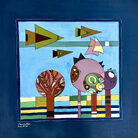 Dal 8 November 2025 al 22 February 2026
Brescia | Museo di Santa Giulia
Dal 8 November 2025 al 22 February 2026
Brescia | Museo di Santa Giulia
Material for an Exhibition. Storie, memorie e lotte dalla Palestina e dal Mediterraneo
-
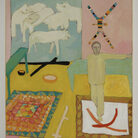 Dal 8 November 2025 al 18 January 2026
Perugia | Perugia, Spoleto e Gubbio
Dal 8 November 2025 al 18 January 2026
Perugia | Perugia, Spoleto e Gubbio
Mimmo Paladino. Antologica
-
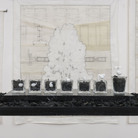 Dal 7 November 2025 al 25 January 2026
Roma | Museo Carlo Bilotti Aranciera di Villa Borghese
Dal 7 November 2025 al 25 January 2026
Roma | Museo Carlo Bilotti Aranciera di Villa Borghese
Silvia Scaringella. Deus sive natura
-
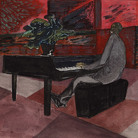 Dal 5 November 2025 al 1 March 2026
Asti | Palazzo Mazzetti
Dal 5 November 2025 al 1 March 2026
Asti | Palazzo Mazzetti
PAOLO CONTE. Original
-
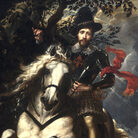 Dal 28 October 2025 al 15 February 2026
Brescia | Pinacoteca Tosio Martinengo
Dal 28 October 2025 al 15 February 2026
Brescia | Pinacoteca Tosio Martinengo
Peter Paul Rubens. Giovan Carlo Doria a cavallo


